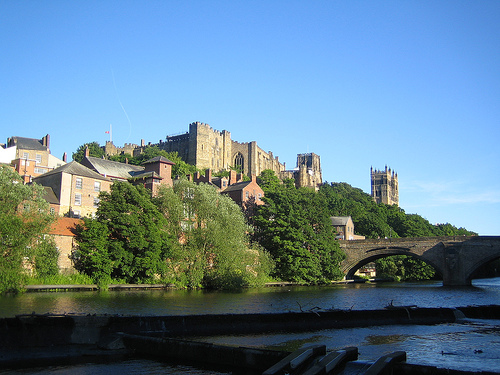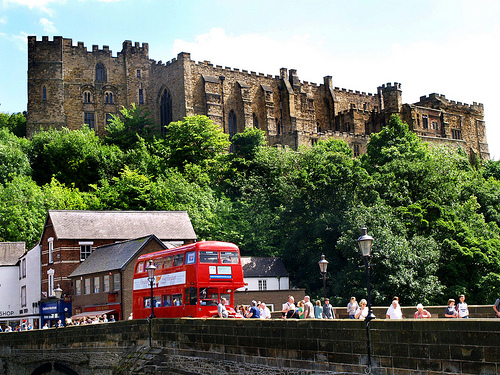

Location: Durham, England Map
Tel. 0191- 334 3800
Durham Castle is a medieval Normal castle in a town of Durham in United Kingdom. Durham Castle was constructed in late 11th century upon Norman Conquest of 1066 by William the Conqueror. This motte and bailey castle was one of many defensive citadels that were erected across England to establish rule of the new invasion army. To solidify royal power the Bishop of Durham moved his seat to this well defended castle. Bishop Antony Bek added a large Great Hall to his residence making it one of the largest in the country. The seat of bishop was moved to Auckland Castle in 1840 and the castle itself was transformed to University College. Due to its preservation state Durham Castle is added to UNESCO World Heritage Site.

The castle was originally built in the 11th century to protect the Bishop of Durham from attack. The north of England was a 'very wild' area, particularly after the Norman conquest of the country in 1066 (beginning with the Battle of Hastings). The castle exemplifies the moth style of construction favored by the Normans.
Big hall
Built by Bishop Antony Bek in the early 14th century, the
Great Hall was the largest of its time in Britain until Bishop Richard
Fox reduced it towards the end of the 15th century. Today it is 14 m
high and over 30 m long.
Chapels
Durham Castle has two
chapels: Norman Chapel, built circa 1078, and Tunstall's Chapel (named
after Cuthbert Tunstall, leader of the English Church and twice Bishop
of Durham, 1474-1559), built 1540.
Norman Chapel is the oldest
accessible part of the castle. The architecture of the chapel is of
Saxon origin, probably due to the fact that Saxons were conscripted to
build it. In the 15th century its three windows were almost entirely
blocked by the expansion of the keep. It fell into disuse by 1841, after
which it served as a corridor for the keep. During the Second World War,
the Royal Air Force used the chapel as a command and observation post
and its original importance was discovered. Shortly after the war, the
chapel was blessed again and weekly services are still held today.
Tunstall's Chapel, the larger of the two chapels, was more commonly
used for religious services. Bishops Cosin and Crewe enlarged it in the
late 17th century. In the back part of the chapel you can still find
some of the misericordia (small wooden shelves that should make it
easier to stand up during services) from the 16th century.
Kitchen
The castle's kitchen and butter factory were set up under
Bishop Richard Fox. They are among the most northerly examples of Gothic
brick building in England.
University College
In 1837 Bishop
Edward Maltby donated the castle to the newly founded University of
Durham for student housing and named it University College. Victorian
architect Anthony Salvin reconstructed the crumbling keep from the
original plans. Opened in 1840, it still serves as a student residence
today, making it the oldest inhabited university building in the world.
College students now take their meals in the Great Hall, which is
also home to the annual Durham Business School Alumni Spring Ball, while
the basement serves as a bar. Both chapels are now used for church
services and theater events. The castle also houses the college's
library, the Palace Green Library. Inexpensive accommodation and
conference rooms are made available during the semester break. The
castle is otherwise only accessible to the public as part of guided
tours.
World Heritage
In 1986 the castle, along with Durham
Cathedral, was declared a World Heritage Site by UNESCO. The British
government justified the nomination:
Few buildings in England can
boast a longer history of continuous occupation than Durham Castle.
Founded soon after the Norman Conquest, the Castle has been rebuilt,
extended and adapted to changing circumstances and uses over a period of
900 years.
(Few buildings in England can boast a longer history of
continuous use than Durham Castle. Founded soon after the Norman
Conquest, the castle has been reconstructed, expanded and adapted to
changing circumstances over the course of 900 years.)